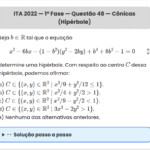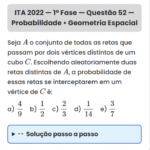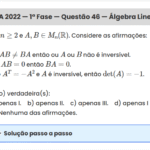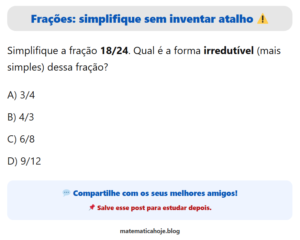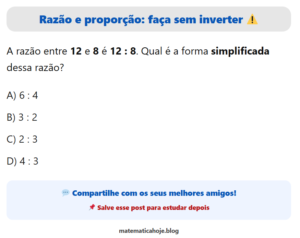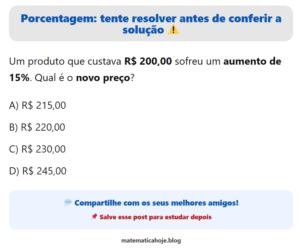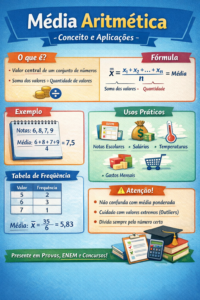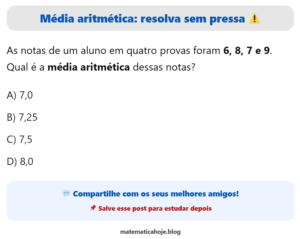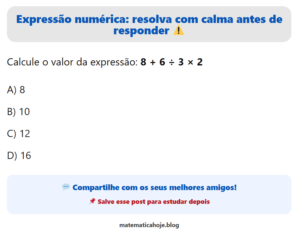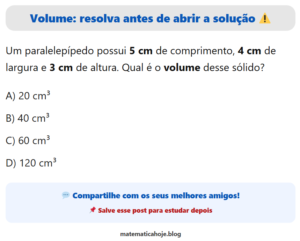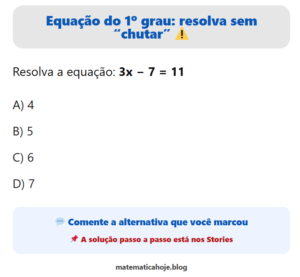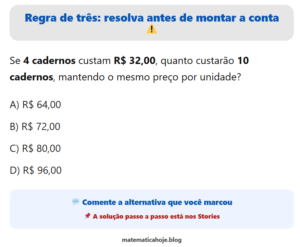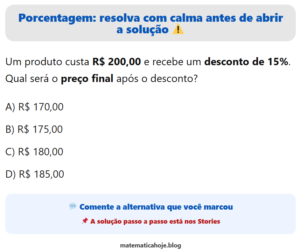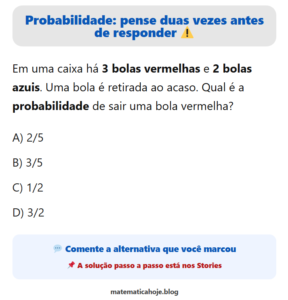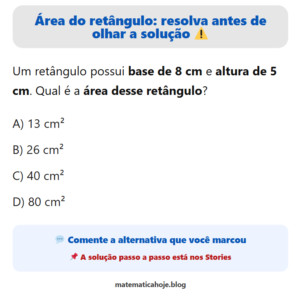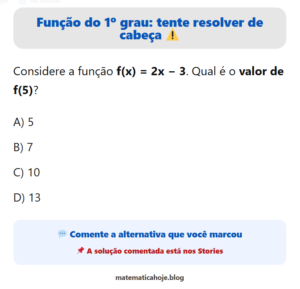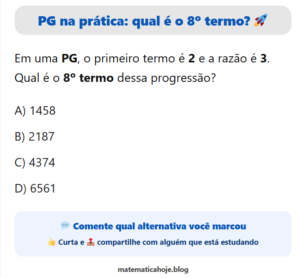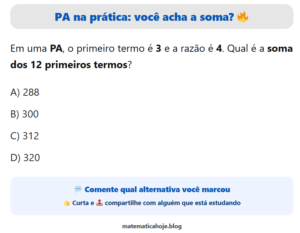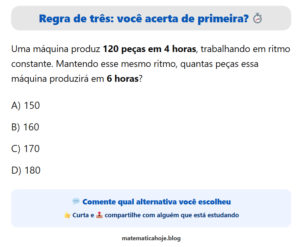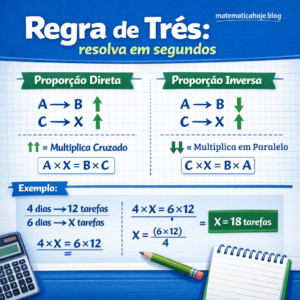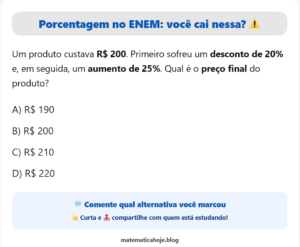ITA 2023 — 2ª Fase — Questão 07 — Cônicas (Elipse)
Determine os pontos \(P\) pertencentes à elipse \(E\) definida por
\[
\frac{x^{2}}{4}+y^{2}=1,
\]
tais que os segmentos de reta que ligam \(P\) aos focos de \(E\) formem um ângulo de \(60^\circ\).
👀 Solução passo a passo
1) Parâmetros da elipse:
Em \(\dfrac{x^2}{4}+y^2=1\) temos \(a=2\) (semi-eixo maior), \(b=1\) (semi-eixo menor) e \[ c=\sqrt{a^2-b^2}=\sqrt{4-1}=\sqrt{3}. \] Logo, os focos são \(F_1=(-\sqrt3,0)\) e \(F_2=(\sqrt3,0)\), e vale a propriedade \[ PF_1 + PF_2 = 2a = 4. \] 2) Lei dos Cossenos no triângulo \(PF_1F_2\):
Seja \(\angle F_1PF_2=60^\circ\). Como \(|F_1F_2|=2c=2\sqrt3\), \[ (2\sqrt3)^2 = PF_1^2 + PF_2^2 – 2\cdot PF_1\cdot PF_2\cos 60^\circ \] \[ \ \Longrightarrow\ 12 = PF_1^2 + PF_2^2 – PF_1\,PF_2. \] Assim, \[ PF_1\,PF_2 = PF_1^2 + PF_2^2 – 12. \tag{★} \] 3) Somando e relacionando:
Da definição da elipse, \(PF_1+PF_2=4\). Ao quadrado, \[ PF_1^2 + PF_2^2 + 2\,PF_1\,PF_2 = 16. \] Substituindo \((\star)\), \[ PF_1^2 + PF_2^2 + 2(PF_1^2 + PF_2^2 – 12) = 16 \] \[ \ \Longrightarrow\ 3(PF_1^2 + PF_2^2)=40 \] \[ \ \Longrightarrow\ PF_1^2 + PF_2^2 = \frac{40}{3}. \tag{1} \] 4) Em coordenadas:
Para \(P=(x,y)\), \[ PF_1^2=(x+\sqrt3)^2+y^2,\qquad PF_2^2=(x-\sqrt3)^2+y^2. \] Somando, \[ PF_1^2+PF_2^2 =(x+\sqrt3)^2+(x-\sqrt3)^2+2y^2 =2x^2+6+2y^2. \] Pelo (1), \[ 2x^2+2y^2+6=\frac{40}{3} \ \Longrightarrow\ x^2+y^2=\frac{11}{3}. \tag{2} \] Já da elipse, \[ \frac{x^2}{4}+y^2=1 \ \Longrightarrow\ x^2+4y^2=4. \tag{3} \] 5) Resolvendo o sistema (2) e (3):
Subtraindo (2) de (3): \[ (x^2+4y^2)-(x^2+y^2)=4-\frac{11}{3} \] \[ \ \Longrightarrow\ 3y^2=\frac{1}{3} \] \[ \ \Longrightarrow\ y^2=\frac{1}{9} \] \[ \ \Longrightarrow\ y=\pm \frac{1}{3}. \] Com \(y=\pm\frac{1}{3}\) em \(\dfrac{x^2}{4}+y^2=1\), \[ \frac{x^2}{4} = 1-\frac{1}{9}=\frac{8}{9} \ \Longrightarrow\ x^2=\frac{32}{9} \ \Longrightarrow\ x=\pm \frac{4\sqrt2}{3}. \]
Em \(\dfrac{x^2}{4}+y^2=1\) temos \(a=2\) (semi-eixo maior), \(b=1\) (semi-eixo menor) e \[ c=\sqrt{a^2-b^2}=\sqrt{4-1}=\sqrt{3}. \] Logo, os focos são \(F_1=(-\sqrt3,0)\) e \(F_2=(\sqrt3,0)\), e vale a propriedade \[ PF_1 + PF_2 = 2a = 4. \] 2) Lei dos Cossenos no triângulo \(PF_1F_2\):
Seja \(\angle F_1PF_2=60^\circ\). Como \(|F_1F_2|=2c=2\sqrt3\), \[ (2\sqrt3)^2 = PF_1^2 + PF_2^2 – 2\cdot PF_1\cdot PF_2\cos 60^\circ \] \[ \ \Longrightarrow\ 12 = PF_1^2 + PF_2^2 – PF_1\,PF_2. \] Assim, \[ PF_1\,PF_2 = PF_1^2 + PF_2^2 – 12. \tag{★} \] 3) Somando e relacionando:
Da definição da elipse, \(PF_1+PF_2=4\). Ao quadrado, \[ PF_1^2 + PF_2^2 + 2\,PF_1\,PF_2 = 16. \] Substituindo \((\star)\), \[ PF_1^2 + PF_2^2 + 2(PF_1^2 + PF_2^2 – 12) = 16 \] \[ \ \Longrightarrow\ 3(PF_1^2 + PF_2^2)=40 \] \[ \ \Longrightarrow\ PF_1^2 + PF_2^2 = \frac{40}{3}. \tag{1} \] 4) Em coordenadas:
Para \(P=(x,y)\), \[ PF_1^2=(x+\sqrt3)^2+y^2,\qquad PF_2^2=(x-\sqrt3)^2+y^2. \] Somando, \[ PF_1^2+PF_2^2 =(x+\sqrt3)^2+(x-\sqrt3)^2+2y^2 =2x^2+6+2y^2. \] Pelo (1), \[ 2x^2+2y^2+6=\frac{40}{3} \ \Longrightarrow\ x^2+y^2=\frac{11}{3}. \tag{2} \] Já da elipse, \[ \frac{x^2}{4}+y^2=1 \ \Longrightarrow\ x^2+4y^2=4. \tag{3} \] 5) Resolvendo o sistema (2) e (3):
Subtraindo (2) de (3): \[ (x^2+4y^2)-(x^2+y^2)=4-\frac{11}{3} \] \[ \ \Longrightarrow\ 3y^2=\frac{1}{3} \] \[ \ \Longrightarrow\ y^2=\frac{1}{9} \] \[ \ \Longrightarrow\ y=\pm \frac{1}{3}. \] Com \(y=\pm\frac{1}{3}\) em \(\dfrac{x^2}{4}+y^2=1\), \[ \frac{x^2}{4} = 1-\frac{1}{9}=\frac{8}{9} \ \Longrightarrow\ x^2=\frac{32}{9} \ \Longrightarrow\ x=\pm \frac{4\sqrt2}{3}. \]
Pontos \(P\): \(\displaystyle \left(\frac{4\sqrt2}{3},\ \frac{1}{3}\right),\ \left(-\frac{4\sqrt2}{3},\ \frac{1}{3}\right),\ \left(\frac{4\sqrt2}{3},\ -\frac{1}{3}\right),\ \left(-\frac{4\sqrt2}{3},\ -\frac{1}{3}\right).\)




